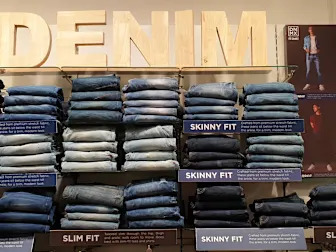Tariffs don’t only drive up prices , they can potentially lead to product shortages, especially if U.S. companies start doing less business with overseas manufacturers.
Check Out: 6 Home Appliances To Buy Now Before Trump’s Tariffs Take Hold
Read Next: The 10 Most Reliable SUVs of 2025
What most people don’t understand is that “roughly 98% of clothing sold in the U.S. is produced overseas, so virtually every brand is impacted by the new tariffs,” according to shopping expert, CEO and founder of Qulture, Quynh Mai.
Advertisement: High Yield Savings Offers
Few people need to replenish all their clothes frequently unless you’ve bought cheap fast fashion or wear your clothes hard, such as for sports or in a healthcare profession. However, some clothing wears out more quickly than others, especially if you’ve got growing children. Here are the clothing items you might want to stock up on now to get ahead of tariff induced shortages .
Underwear and Socks
Your socks may say Nike on them, but they’re most likely imported from China or Vietnam — where tariffs are high. Socks can spring holes quickly or wear thin at the heel. Underwear that aren’t 100% cotton can also wear out quickly from repeated washing and drying.
Find Out: Surprising Items People Are Stocking Up on Before Tariff Pains Hit: Is It Smart?
Basic Denim and Everyday Jeans
If you love to live in comfy jeans and other denim items, stock up on them now — there’s no telling how quickly your favorite jeans will skyrocket . Anyone who has shopped for jeans in person likely knows that it takes trying on a number of pairs to find that perfect fit. Once you find it, you can order several pairs to hold you over.
T-Shirts and Basics
Even your favorite low-cost cotton basics are likely imported, thus set to spike. For people who prefer natural cotton, too, it can be painful to pay exorbitant prices for such a staple item. Fortunately, many basic T-shirt and undershirts are sold in sets or packs everywhere from Costco to Target.
Seasonal Outerwear
Your favorite outwear — light jackets, raincoats, hats, gloves, even sun hats — are typically made from the kinds of synthetic materials imported from countries abroad. While it might not be raining anymore in your neck of the woods, or won’t stay sunny for long, buying these items ahead of the next season can save you on inflated costs to come.
Sneakers and Athletic Shoes
Goods imported from China are among those being hit hardest by the tariffs, especially footwear, according to Ira Lysa, a fashion designer and founder of Imperial Alterations and Ira’s Bridal Studio.
“Many name-brand and off-brand sneakers are imported, especially from Asia. Tariffs on footwear have already impacted prices in previous trade disputes,” Lysa said.
While even current prices on sneakers and athletic shoes are not exactly cheap, many stories will offer two-for-one discounts, sales and even buy-one-get-one deals (BOGO).
Uniform or Work Apparel
If your job requires any uniform or work apparel such as scrubs, security uniforms, work pants and so on, it’s a good idea to get at least one back-up set before prices skyrocket.
Many of the people with these kinds of jobs are working-class families who may not have a lot of extra or disposable income to share.
Independent Label Clothing
Large, well-capitalized brands will be able to absorb some of the increases temporarily, using this as an opportunity to gain market share by delaying price hikes, Mai said. However, “smaller, independent labels don’t have that financial cushion or cash reserves and will likely have to raise prices sooner to stay afloat.”
Even a 10% tariff will be noticeable to the average consumer, especially when layered on top of ongoing inflation.
Shift To Buying American
Most of the recognizable fashion brands rely on global supply chains, Mai said. “However, some niche, heritage, or premium brands produce domestically in the U.S.” While these brands are less exposed to tariffs and can offer more stable pricing in the short term, they tend to already be on the pricier side.
“Their smaller scale and higher labor costs mean they’ve never competed on price — just on quality, sustainability or values.”
Brands May Change Features
Mai said that while brands that absorb costs may do this by subtly reducing product features or quality instead of raising sticker prices .
“They will skimp on fabric weight, stitching quality or packaging to avoid giving their customers sticker shock.”
Tips for Shopping in a High-Tariff Environment
Mai offered the following tips for buying clothing in this economy:
While you shouldn’t spend money just to spend money, it’s worth adding a few more items to your closet at affordable prices if you know you’ll need them in the near future.
More From GOBankingRates
Sources
This article originally appeared on GOBankingRates.com : 7 Clothing Items To Stock Up on Now in Case of Tariff-Induced Product Shortages


